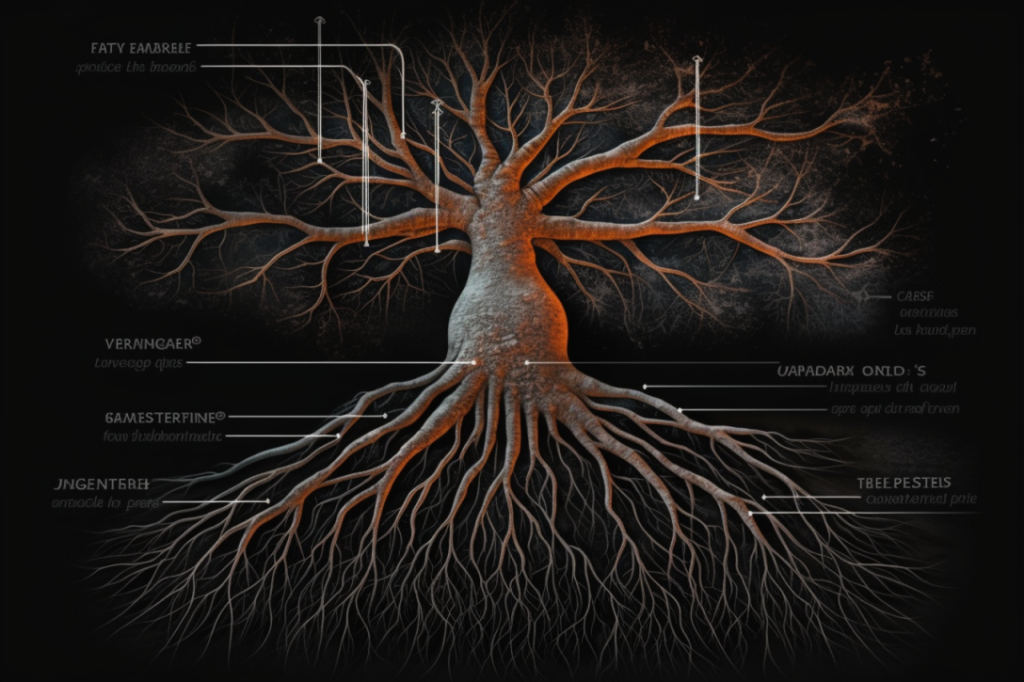The latest version of WordPress Gutenberg has been released. It’s certainly not a major upgrade but more of a minor update.
WordPress boasts performance improvements to its editor along with bug repairs and additional features.
While 11.2 is a minor update, the bug repairs and improvements are comprehensive in their own right.
What is Gutenberg Anyway?
To understand what Gutenberg is, it’s important to first look at the publishing model WordPress used up to now.
One of the most popular features of WordPress is its easy installation process and straightforward editing interface.
These features attract a lot of first-time users who simply want to write articles for their blogs without having to worry about complicated coding or design issues like layout and CSS styles.
With these new writers came more content but also an increased demand for tools that make publishing easier.
The simplest was the introduction of article templates into WordPress core–it allows you to create multiple versions of your posts with minimal effort while still allowing you to customize them as needed.
Features like custom post types were next.
They give you more control over your site by letting you add new content types to your blog.
Features like taxonomies and custom fields followed, allowing you to sort and organize the content in any way you want.
With all of these features came plugins that added even more options for customizability.
One such plugin is Beaver Builder which allows users to drag-and-drop elements into templates so they can play around with layouts before publishing their sites.
Other plugins allow you to add charts, maps, sliders and other advanced pieces of media onto your site without having to code them from scratch.
The most popular WordPress theme frameworks embrace this phenomenon by including thousands of pre-made pages (or “skins”).
With a few clicks, you can install Bootstrap or Foundation and start laying out your website to your liking.
This is the traditional WordPress publishing model. It’s been around for over a decade and has shaped how we think about building websites using WordPress.
In this model, users are never expected to write code—what they see at one point in time is what ends up on their site forever.
While that might have worked well when blogs were still starting out as an internet phenomenon, it doesn’t fly anymore with the advent of social media—users want control over every single detail, from fonts to layout styles, and everything in-between.
However, there are plenty of people who just don’t get coding or design. For those who are coding and designed-challenged, using such a model may be the perfect solution.
We know someone who had his Twitter account for years but only recently ventured beyond changing their profile pic and header image because the thought of putting together tweets, interacting with followers, and leveraging social media seemed like too much work.
Then, they started using Tumblr. Tumblr is similar to WordPress in that users can publish content by themselves—the only difference is that anyone who uses Tumblr doesn’t have to worry about editing HTML or CSS since you can edit your site right on their website.
It’s easy and it works like a charm! That makes sense—after all, they’re a blogging platform first and foremost. They’ve streamlined the process so there’s less labor involved (and promoted it as well—that’s why they have such an active user base).
So now we get to WordPress version 5.0 which brings us to Gutenberg, which was—at the time—a new editor built from scratch. It was a bold move, and it’s likely to continue to have lasting repercussions on the WordPress community.
The biggest complaint out there regarding Gutenberg is its lack of backwards compatibility.
The developers made it clear when it was released that they were moving forward, and this meant throwing everything but the kitchen sink into the new editor—even if some features (like post formats or plugins) were not compatible with Gutenberg yet.
This caused an uproar in the user base, angering many people who’ve spent years mastering the current editing interface and were now tasked with learning a whole new system overnight!
We have not been too keen on Gutenberg because of how it interferes with the writing process, which adds unnecessary steps and inefficiencies.
The thing is that blocks and Gutenberg are not WordPress. What are blocks? Blocks are a visual way of editing your WordPress content area. Whether you want to insert a paragraph, an image, a list, or other type of content element.
The one thing that makes WordPress, well, WordPress–is the ability to just write and write. THAT is what WordPress is all about.
Introducing Gutenberg and its meaningless features really does nothing but introduce confusion among the WordPress base.
Changing WordPress’s entire structure does nothing for the overall experience, and even introduces efficiency problems.
It cuts into the business of writing far too much. Most developers refer to it as a WYSIWYG—What You See is What You Get—which refers to a type of visual web page editor that doesn’t require coding than an actual editor.
And then there’s the question of user experience. Gutenberg is a system that doesn’t care about users, their experiences or their goals—it only cares about itself.
This has already caused no small amount of frustration among early adopters who have been testing Gutenberg for months on end.
And unlike something similar to Google Docs, where you can get a team together to edit a document at the same time, WordPress is designed for content creators working alone. In other words, it’s not built for situations where collaboration is key.
We hate to say it, but we still don’t see Gutenberg as being something that will last in WordPress. It’s still not useful, there are still bugs everywhere and its premise is flawed since it assumes that what all users want and need in order to create their content is a WYSIWYG design-it-yourself interface (which isn’t true!).
For most people out there creating content on the internet, they just want simple text boxes so they can focus on writing without having to worry about screwing up their layout or making a mess of things.
That’s why we think that the best thing for WordPress would be to just rip out Gutenberg and replace it with a new WYSIWYG editing interface—one that doesn’t bother itself with things like photo-editing powers or fancy formatting systems.
After all, the purpose of WordPress is to write, isn’t it? There’s no reason why we shouldn’t go back to the basics here and give people what they want (and need) in order to get stuff done!
What, Exactly, is New in the Latest Update?
There are approximately three brand-new features in the WordPress block editor, including the following:
Search Block Color Support
The new features include a search block-button. This means that you can now change colors in the on-site search button.
New Pullquote Design Options
There are more color and border options to choose from for the pullquote design box as well.
What is a pullquote? This is a post feature that is a quote, enhanced by a larger font size, and perhaps a different font style to set it apart from other normal text.
Pullquotes are used when you have supportive quotes from outside sources and you may want to highlight to reinforce the material you are talking about on your post.
In print media, pullquotes have been used extensively to highlight such information. Don’t underestimate the power of using pullquotes to get your point across!
New Group Block Flex Layout Support
In addition, there is also “Group Block,” which is a type of flex layout.
This is in the testing phase at this time.
WordPress explains that this would provide parent blocks the ability to define the layout of their inner blocks.
According to WordPress in their announcement here:
In the near future the intention is to provide options for changing the orientation, alignment, justification, and spacing within a flex layout.”
A Brand-New Button Allows for In-Publishing Post Creation
One of the other enhancements to Gutenberg includes the ability to create brand-new posts while you’re working on publishing another one.
This kind of feature is useful especially if you have a bunch of related posts in a sequence, and you need to create them all at once.
It will allow you to create such a post directly from the editor.
Bug Repairs in This Version
These are just a few examples of the bug repairs that have been introduced in the latest version of Gutenberg:
Block Library Bug Repairs:
Featured Image: Authors can now select images that were uploaded by other authors.
Template Part: Avoid the button layout shift.
Block Editor Bug Repairs:
Repaired the issue of the block actually being selected as opposed to the title when using the shortcut “select all”.
Post Editor Bug Repairs:
Most Used Terms: 403 error bug that appeared for non-administrators.
Editor: ‘hide_empty was set for most used terms query.
Widgets Editor Bug Repairs:
Repair theme/plugin incompatibility, such as the call onChangeSectionExpanded, conditionally.
Other Components Bug Repairs:
Repair: Native UnitControl for handling single unit configuration.
UnitControl: Setting the correct unit when units have one option.
Card: Add missing box-sizing CSS rules.
Performance Improvements Introduced in Gutenberg 11.2
Setting the passive listener option for user popover scroll to avoid negative impact to performance in scrolling.
Dragging items using transform property to bypass layout along with re-paints.
These Are Just a Small Sample
These are just a small sample of the improvements and bug repairs that were introduced in the latest release.
You can find the full list here.
The Question Remains: Is it Worth it Updating to Gutenberg 11.2, or Gutenberg at All?
As is all-too-often stated in the SEO world: it depends. Our opinion and preference are to use the latest version of any software update.
Of course, we also love the original WordPress editor for what it’s best at: writing and creating content.
We don’t feel that the issues that Gutenberg adds to the overall workflow is worth jumping to the entirely new editor, and that using a compatible “remove Gutenberg” plugin is the best solution.
However, if you’re a publisher using the Gutenberg editor, the first critical step you will want to tackle is backing up your existing website before updating.
It is always recommended to back up your existing installation before upgrading, just on the off-chance that there are any incompatibility issues with new plugins or other aspects of switching over to Gutenberg.
You don’t want to risk the situation of your new website upgrade not being compatible with the plugins that keep things running smoothly.
While rare, it does happen. We’ve seen it. And it isn’t pretty. So be sure to get those back ups done!
If you are not entirely sure that you like Gutenberg, however, it might be worth it to create a local staging site with the new WordPress Gutenberg installed so you can see firsthand how it works.
You may decide that you don’t like it, in which case, the solution will be relatively simple: just don’t upgrade.
Do you plan on taking advantage of the latest version of WordPress Gutenberg?









